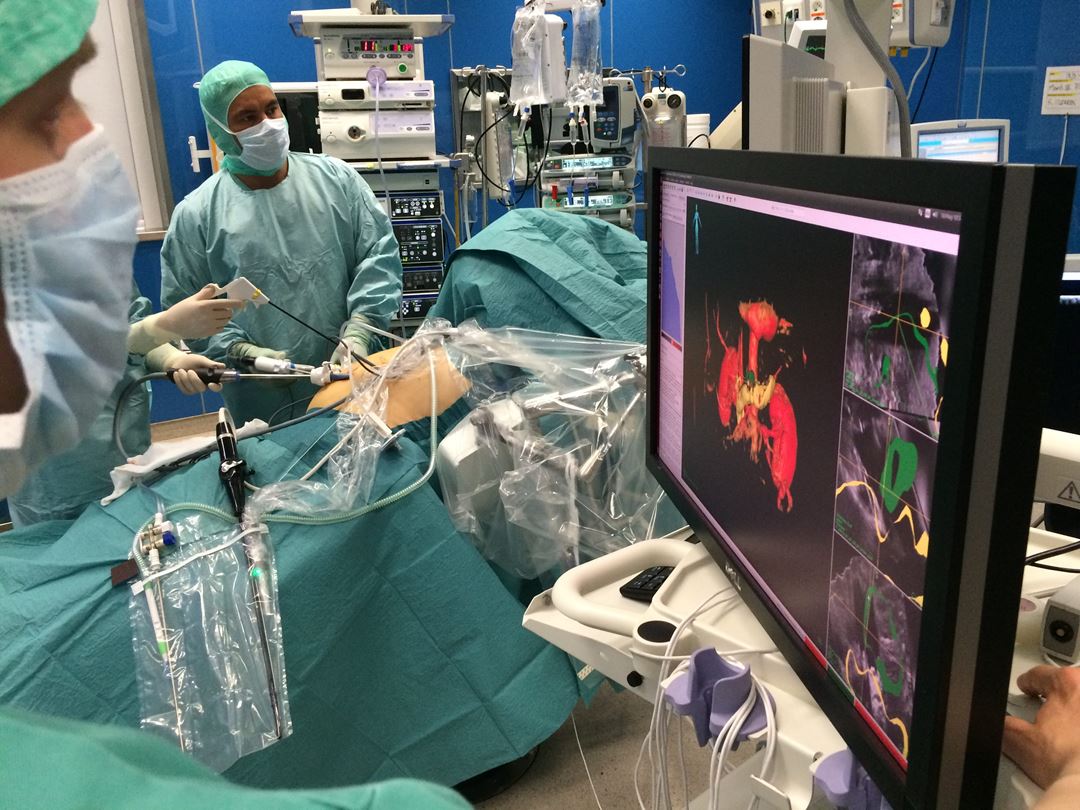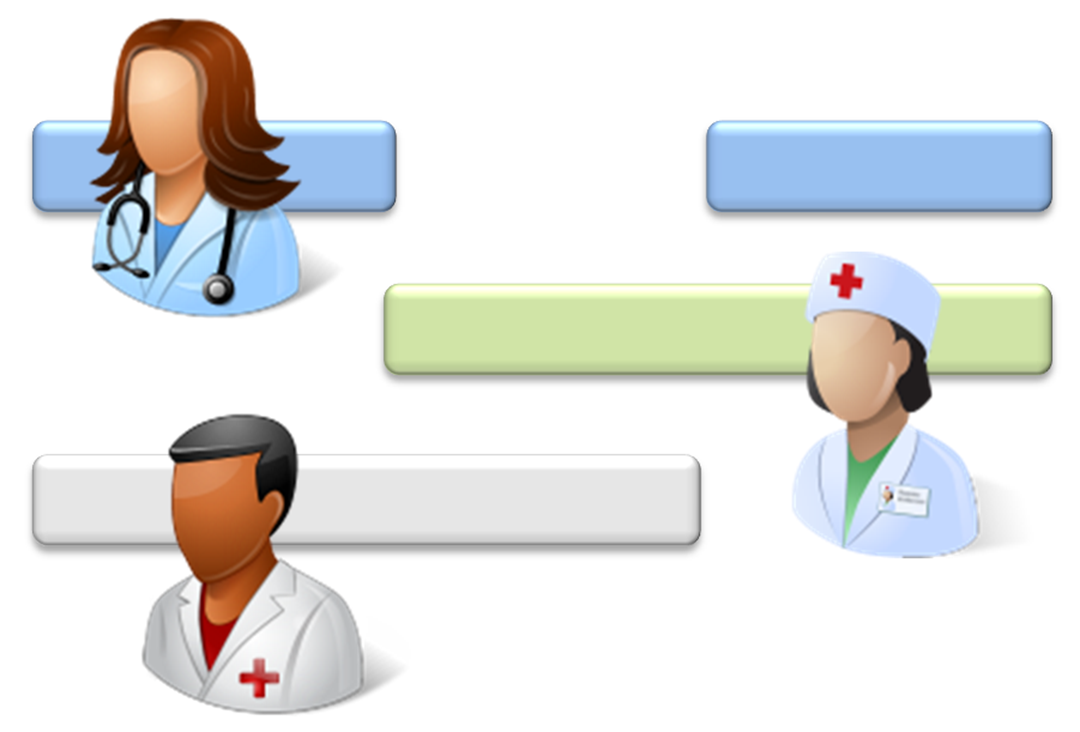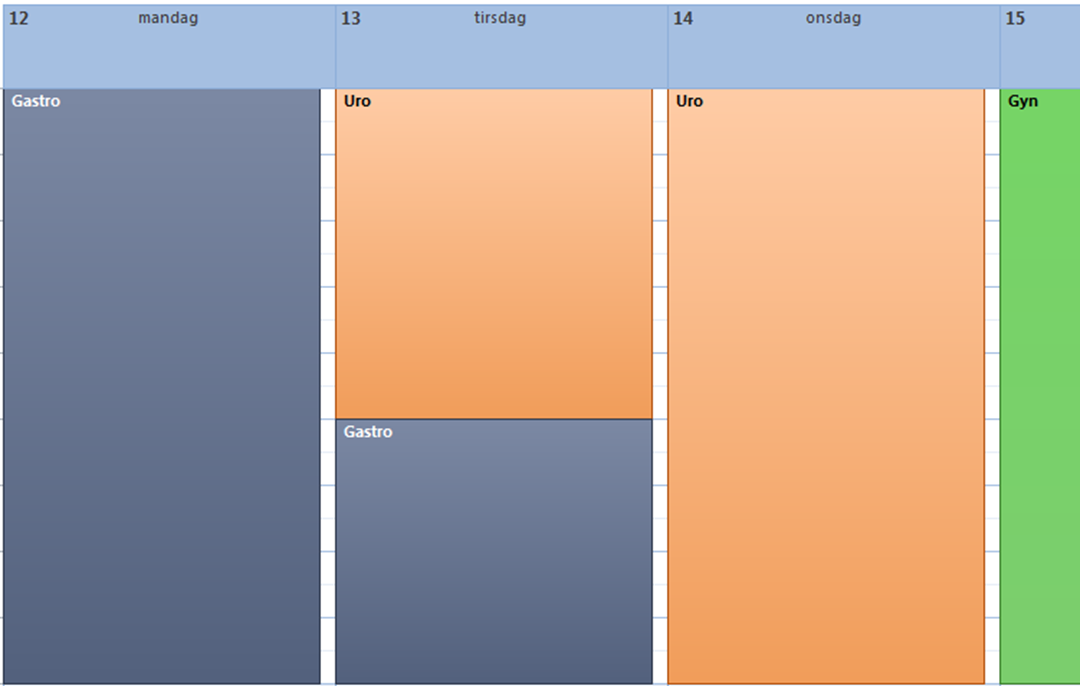
Scoop Scheduler
A solver for generalized Resource Constrained Project Scheduling Problems. With a rich problem model, and an adaptable set of algorithms, it is applicable to a wide range of real world planning- and scheduling problems.

One of the fundamental challenges in health care management is to achieve an efficient utilization of expensive resources, while maintaining or increasing the quality of care. This challenge will increase: Governments are striving to reduce the overall cost of health care, while both the population of elderly people and the demand for flexible services are increasing.
Quantitative decision technology can provide vital support for planning and decision making on all levels, ranging from strategic management to operative, day-to-day activity planning. While extensively used in the industry, such tools are not yet widely applied in the health care sector. Modern hospitals are complex organizations, with highly interconnected and complex planning problems. This, along with variations between hospitals makes the development of decision support tools for planning and management a challenging task.
Our research in optimization methods aims to contribute to the development of such tools. Our research is carried out through a variety of projects, ranging from blue-sky academic to applied industrial research.
Activity scheduling here means the daily planning of diagnostic, treatment, and control activities for individual patients. Each activity requires resources - human and material - with certain skills or capabilities. The goal is to treat each patient as soon as possible, while taking the medical urgency of each patient into account. Resources should be used in the best possible way to achieve a high level of treatment quality.
Examples of such activity scheduling are surgery scheduling on various time scales, scheduling of appointments for diagnostic examinations, scheduling of cancer treatment programs, etc.
Surgery Scheduling
In many hospitals, the surgery department is a significant cost driver. Optimal surgery scheduling can improve resource efficiency, reduce staff workload, reduce patients' waiting time, and reduce the number of surgery cancellations. However, surgery scheduling is a highly complex process, involving many shared resources, as well as a high degree of dynamics and uncertainty. This is therefore a typical example of an application where modern optimization technology can simplify the work considerably for the human planner.
The term surgery scheduling includes planning and scheduling problems on different time scales and levels of detail. For admission of inpatients, the admission planning problem is to assign a set of surgeries to days, operating rooms (or teams). In some instances, also a surgeon and an exact start time must be chosen. Closer to the day of surgery we find more detailed surgery scheduling problems, where several activities are considered for each patient, and where several other kinds of resources are also taken into account.


A solver for generalized Resource Constrained Project Scheduling Problems. With a rich problem model, and an adaptable set of algorithms, it is applicable to a wide range of real world planning- and scheduling problems.
The task of personnel scheduling is to match staff members to shifts (working time) to meet the required staffing levels for a given planning horizon while considering laws, regulations, skills, fairness, and preferences. The output solution of the personnel scheduling problem is a schedule of the working hours and off-time for the employees that provide an overview of staff utilization and related expenses.
Traditionally, software based personnel scheduling in hospitals has been used for nurses, but we see an increasing use of scheduling technology also for doctors.
Our software for personnel scheduling is called Scoop Roster (see below).


A software component for automatic optimization of rosters
Shift Design
A prerequisite to high quality personnel schedules is an efficient shift design, which aims to find a set of shifts to match predicted work demand for a planning horizon while satisfying a set of constraints. Good shift design is important for the hospital (e.g., lowering cost, managing staff coverage, staff satisfaction) and its staff (e.g. healthy working shifts). The number of possible solutions for the shift design problem increases exponentially with the size of the problem and quickly becomes too large for an efficient manual approach.
'Resources' can be both human and material. Examples of tactical resource management are the creating and maintainance of "master surgery schedules" for operating room suites, or a calendar that shows the daily assignment of surgeon resources to various patient groups.

Some test beds for health care optimisation problems are made available here.
Generalised Surgery Scheduling Data [Download]
This is a set of benchmark instances used in the following publication Riise, Atle, Carlo Mannino, and Edmund K. Burke. "Modelling and solving generalised operational surgery scheduling problems." Computers & Operations Research 66 (2016): 1-11.
Nurse Rostering Data [Download]
A set of real world instances for the Nurse Rostering Problem. These seven cases are from Norwegian hospitals, collected through the software vendor Gatsoft AS.
When referring to this test bed in publications, please use the following reference:
Stølevik, M., Nordlander, T., Riise, A., (2010) SINTEF ICT: Nurse Rostering Test Cases - Available from: https://www.sintef.no/Projectweb/Health-care-optimization/Testbed/ [Accessed date]
Shift Design Data [Download]
A set of synthetic instances that are derived from detailed discussions with the hospitals.The use of synthetic data is justified by the present lack of high-quality real 24-hour demand data suitable for our purposes; our reference hospitals have plans for improving and standardizing their 24-hour demand data. The 24-hour demand data is subdivided into time slots of 15 minutes, and the demand values in a single time slot are for each skill type. The 24-hour demand data can be different for different weekdays. In our data, the workforce (nurses, head nurse, and so on) is subdivided in up to 5 groups, each group having the same skill set. The skills in a skill set can be of 5 different skill types.
When referring to this test bed in publications, please use the following reference:
Eivind J. Nilssen, Martin Stølevik, Tomas Eric Nordlander (2010) SINTEF ICT: Shift Design Test Cases - Available from: https://www.sintef.no/Projectweb/Health-care-optimization/Testbed/ [Accessed date]
MSS-Adjusts Surgery Data [Download]
We were provided with data for 3 years of surgery by SAB (Sykehuset Asker og Baerum HF), a major hospital in the city of Oslo, for a project called MSS-Adjusts. We would like to thank Tone Jensen at SAB not only for providing the data but also for allowing us to make it available for the research community.
When referring to this Test Bed in publications, please use the following reference:
Carlo Mannino, Eivind J. Nilssen, Tomas Eric Nordlander, SINTEF ICT: MSS-Adjusts Surgery data - Available from: https://www.sintef.no/Projectweb/Health-care-optimization/Testbed/ [Accessed date]